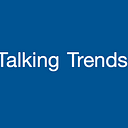16 Unconscious Bias Examples and How to Avoid Them in the Workplace - Millie Tan
We can all be prey to unconscious bias — that’s the keyword — it’s unconscious. It isn’t intentional, you don’t want to exclude someone, and the thought process isn’t really negative. I recently read an article published by Built In Beta, titled 16 Unconscious Bias Examples and How to Avoid Them in the Workplace, by Bailey Reiners.
The article’s opening line is “if you’re hiring based on ‘gut feeling,’ you’re likely hiring on the basis of unconscious bias.” This, in particular, stood out to me because usually, the saying goes, “trust your gut feeling”, but little do we realize that the gut feeling may actually make us act in the bias of people who look or act similar to ourselves. It’s an eye-opening thought really. The best way for anyone to prevent themselves from falling to the feet of unconscious bias would be to be hyper-aware. Be aware of how your words, actions, and even thoughts could be potentially hurtful to someone else. Or in this case, how they can prevent you from hiring the best, most talented, and diverse workforce, simply because you fell prey to unconscious bias.
The article highlights a number of unconscious biases which are rampant in the typical workplace — affinity bias, attribution bias, confirmation bias, and so on. The article goes into detail into each one and even provides ways to avoid them. The avoidance strategies are so simple, and yet they are things we constantly need to remind ourselves.
For example, for the halo bias, it is easy to attribute desirable qualities to someone if they attended a good university. However, that isn’t always the case. A good way to avoid this, as pointed out by the article, is to search for something unique a candidate offers. Keep their skills and experiences in mind, while considering the privileges and opportunities they may or may not have had.
The article gives a great insight into all the unconscious biases that may take over our attitudes in the workplace. It provides further helpful insight into how to avoid such bias, and build an inclusive workforce.
You can read the original article here.
